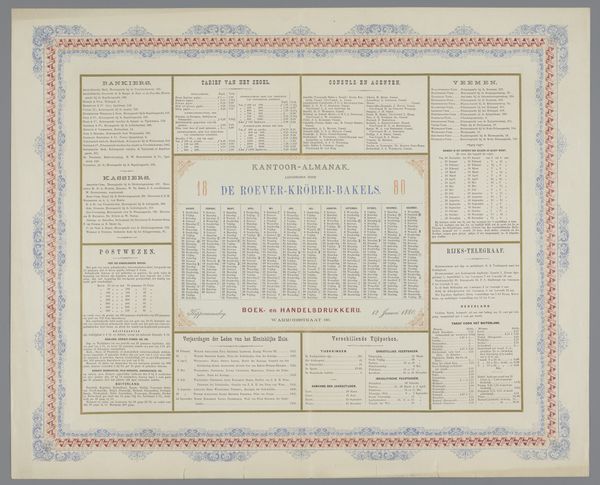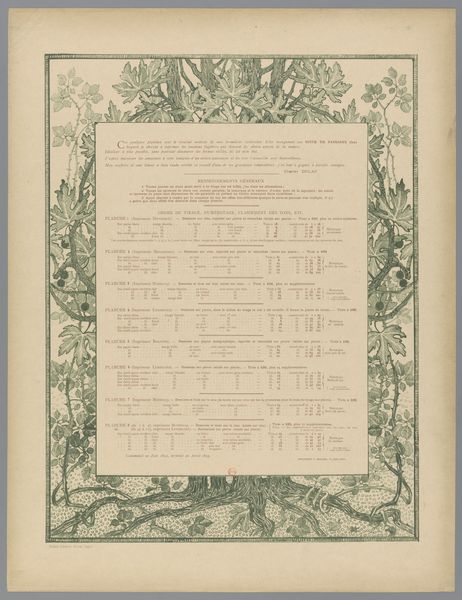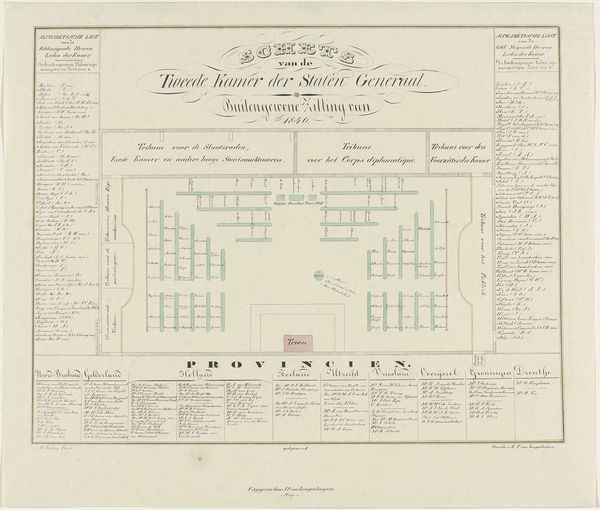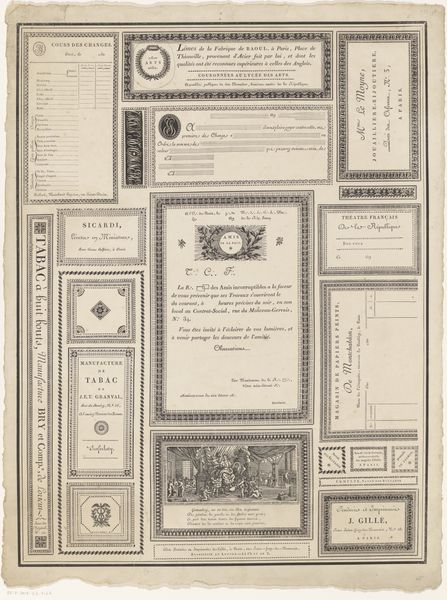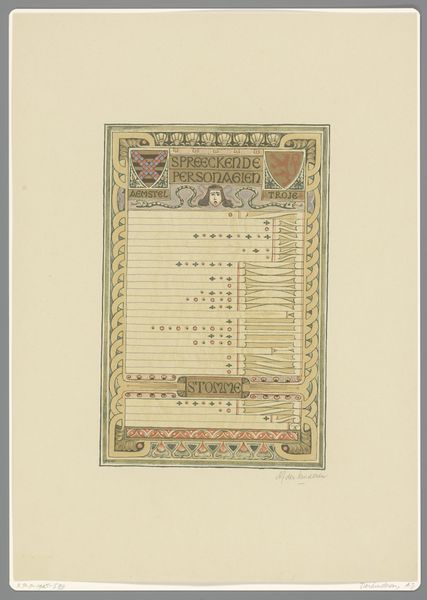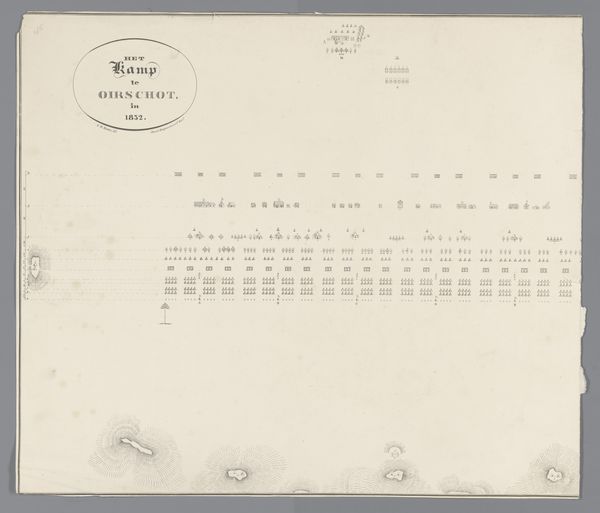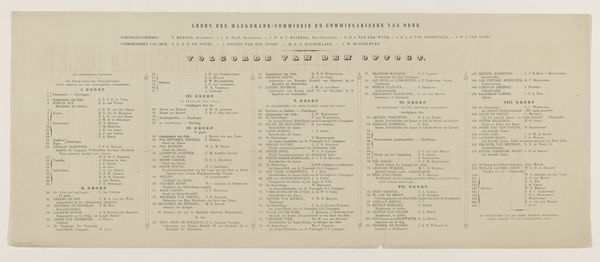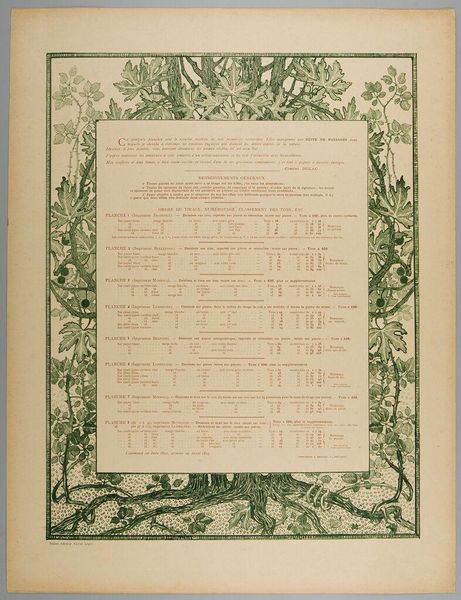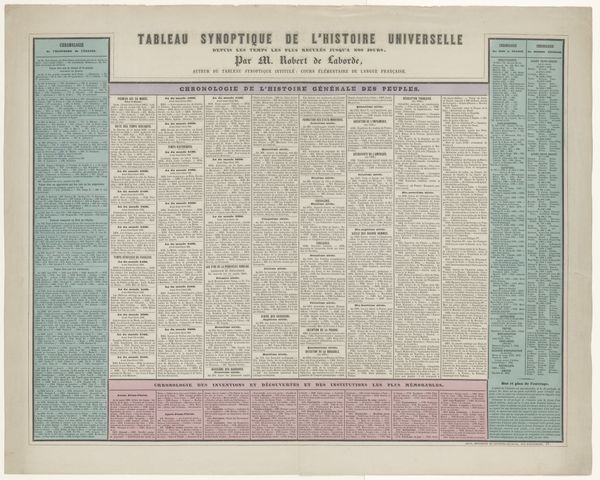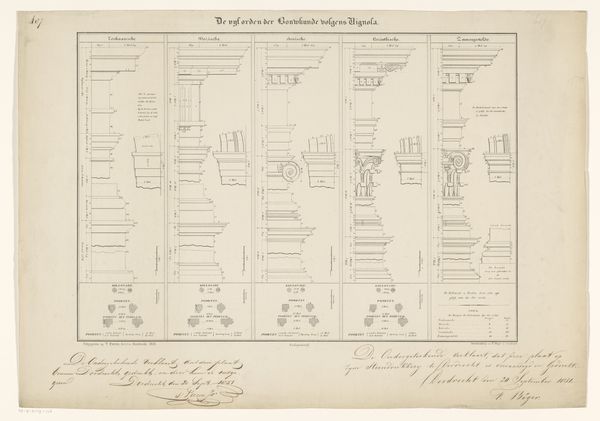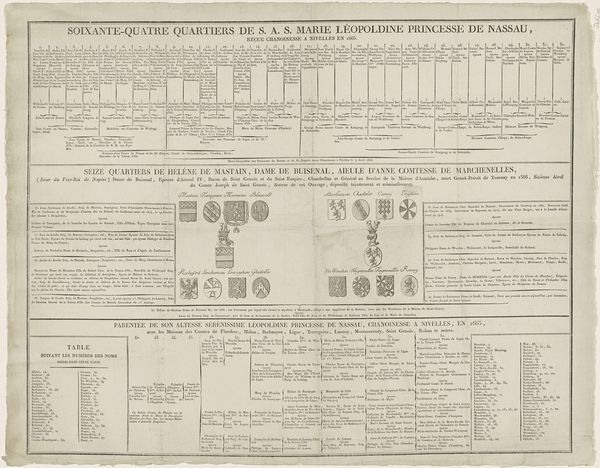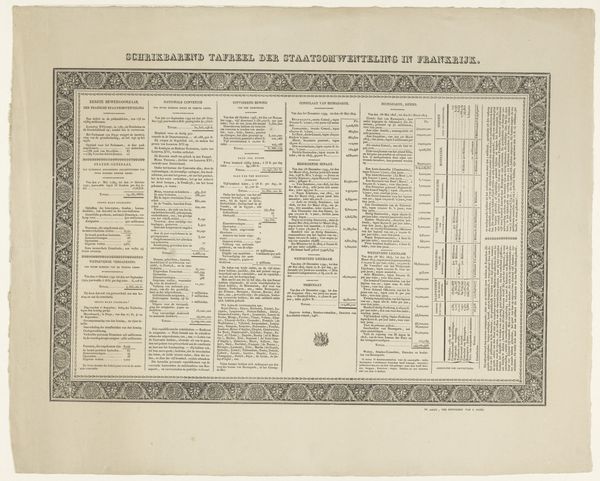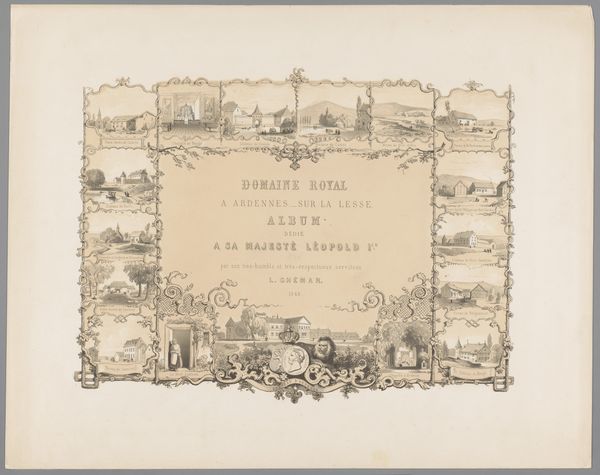
graphic-art, print, typography
#
graphic-art
#
old-fashioned
#
aged paper
#
yellowing background
#
parchment
# print
#
old engraving style
#
retro 'vintage design
#
archive photography
#
typography
#
old-timey
#
yellow element
#
golden font
Dimensions: height 348 mm, width 446 mm
Copyright: Rijks Museum: Open Domain
This is a calendar printed for the leap year of 1876. Note the careful arrangement of the months, framed by decorative borders that evoke both classical and contemporary design elements. The borders themselves are a fascinating mix of styles. The corner ornaments, for instance, hint at the acanthus leaves found in classical architecture, symbols of enduring life and rebirth. This motif, dating back to ancient Greece, experienced a revival during the Renaissance, and we see echoes of this enduring symbol here. Even the choice of typography contributes to this dance between past and present. The gothic lettering used for the title, "Kalender voor het Schrikkeljaar 1876," harkens back to the medieval period, invoking a sense of tradition and solemnity. The calendar, therefore, isn't merely a practical tool for marking time. It’s a canvas where the past continually resurfaces, each element carrying layers of cultural and historical significance.
Comments
No comments
Be the first to comment and join the conversation on the ultimate creative platform.
